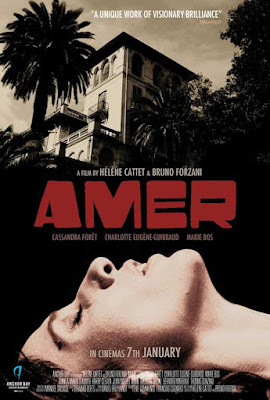Circus of Horrors (1960) Anton Diffring stars as brilliant but twisted plastic surgeon Dr. Schuler. He has a gift for correcting facial deformities, but trouble follows him wherever he goes. While fleeing the authorities in England, he assumes a new identity in France, and wastes no time cheating the owner of a second-rate traveling circus (played by Donald Pleasence) out of his property. He acquires a troupe of performers consisting of people he’s helped along the way with his surgical skills – but there’s a stiff price to pay for anyone who thinks of leaving. The circus hops from town to town, with a series of mysterious deaths attributed to various “accidents.” The dim local police are slow to find a connection between the new owner and the deaths, until a meddlesome British reporter starts investigating the clues. Diffring’s performance as the amoral doctor is the best reason to see this goofy but fun circus-themed thriller. And just try not to laugh at the obvious bear and gorilla suits used in some key circus scenes. One word of warning: prepare to hear the song “Look for a Star” multiple times (apparently the producers wanted their money’s worth).
Rating: *** ½. Available on DVD and Netflix Streaming.
The Ward (2010) John Carpenter’s first feature-length film in ten years is merely adequate. Amber Heard stars as Kristen, a young woman’s who’s been committed to a mental hospital after setting a farmhouse on fire. She can’t remember what prompted her behavior – the only clue is the farmhouse’s address written on her hand. She meets the usual colorful assortment of patients that you’d expect to see in a fictitious mental ward. In fact, too much of Michael and Shawn Rasmussen’s screenplay seems to borrow from other mental illness films, such as One Flew Over the Cuckoo’s Nest and Shock Corridor. The Ward never really seems like a Carpenter film, lacking his trademark music (The generic sounding score was done by Mark Kilian), and delivering only a few generic jolts. The whole production just seems to be lacking in energy. The perfunctory surprise ending won’t be much of a shocker either. You’ll probably see it coming long before the main character does.
Rating: ** ½. Available on DVD, Blu-ray and Netflix Streaming.
The Pit and the Pendulum (1991) This direct-to-video quickie by director Stuart Gordon, based very loosely on the Edgar Allen Poe story of the same name, boasts a surprising assembly of talent, but fails to rise above mediocrity. It’s a cut above the usual Full Moon Entertainment productions, although that’s not really saying much. It’s set during the Spanish Inquisition, when it presumably didn’t take much to be labeled a witch. Lance Henriksen takes every opportunity to chew the scenery as the pious Torquemada the Grand Inquisitor. He has a little too much pride in his work as he mercilessly tortures those who have sinned against the church (according to his skewed judgment). Jeffrey Combs is amusing in a supporting role as Francisco, one of Torquemada’s lackeys. There’s also a cameo by Oliver Read as a cardinal. Gordon does the best he can with what was clearly a low-budget production, but the sets look flimsy and cheap (the pendulum room looks especially unconvincing), leading one to believe that the Spanish Inquisition was just a small-time operation. Henriksen fans might want to take a look, simply for his nutty performance, but everyone else should consider searching for something else.
Rating: ** ½. Available on DVD and Netflix Streaming.
Amer (2009) Amer is one of the best looking bad movies I’ve ever seen – a movie only a film student could love. This interesting to look at but ultimately vapid French thriller emulates the Italian giallo style, replete with artsy camerawork and weird music that emphasizes mood over substance. The film’s structure can be divided into three parts, as it follows the central female protagonist as a child, adolescent and adult, along with her connection to a creepy house.
Writer/directors Hélène Cattet and Bruno Forzani seem to confuse innovation with irritation, in their efforts to convey a dreamlike state throughout Amer. To say that the dialogue is spare would be an understatement. The characters avoid opening their mouths, as if speaking would cause great pain. The numerous extreme close-ups only serve to distance the viewer, rather than make the film more intimate. The rampant, frequently obvious symbolism is clumsy and laughable.
Amer might have worked better as a short film, but at its present length, it’s an exercise in tedium. All of the characters are deliberately held at arms’ length. As the film wears on, the novelty of their ambiguity just seems grating and pretentious. There are individual scenes that manage to be effective, but it doesn’t add up to much. So, is it a blatant rip-off or loving pastiche of the giallo genre? You decide. I’m bitter.
Rating: **. Available on DVD and Blu-ray.





No comments:
Post a Comment